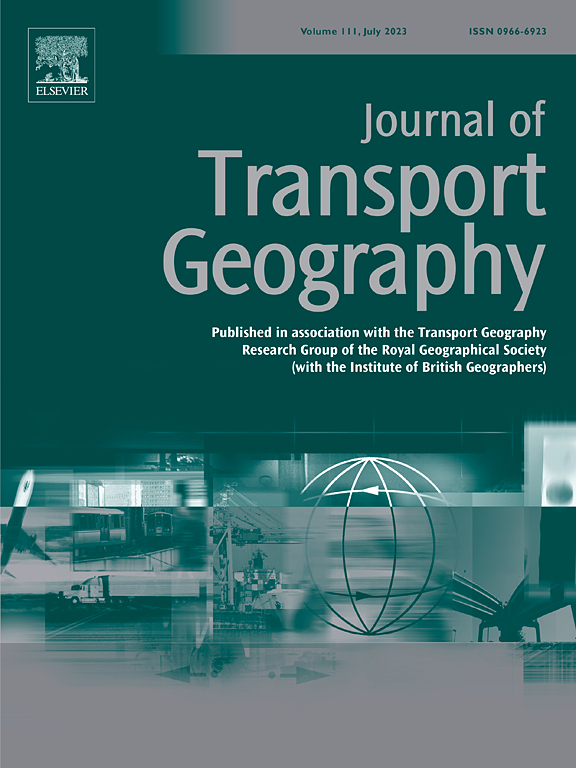The competitiveness of electric trucks in multimodal networks: A case study of integration with inland waterways
IF 6.3
2区 工程技术
Q1 ECONOMICS
引用次数: 0
Abstract
Crucial steps towards sustainable transportation include reducing road transport and transitioning to electric vehicles. Inland waterway transport (IWT) can reduce road transport but has not yet integrated battery-electric trucks (BETs) into its network. This study aims to address this gap by evaluating the competitiveness of heavy-duty BETs within a multimodal concept in the West German canal network. The total cost of ownership (TCO) methodology results indicate that BETs can be competitive with diesel trucks depending on the distance traveled and the ownership period. The baseline scenario suggests that BETs become a more economical option than diesel trucks for daily distances exceeding 234 km, assuming a 9-year ownership period. The economic impacts of various scenarios are evaluated, including subsidies, maintenance contracts, resale values, tolls, recharge times, and CO2 emissions. The purchase cost of the truck is the most significant cost for the electric option, while the fuel cost is the main cost for the diesel option. Furthermore, the results indicate that BETs emit 56 % less greenhouse gas (GHG) emissions than their diesel counterparts, and the decentralized IWT concept can decrease GHG emissions by 51 % through reduced road transport. The findings can provide decision-makers with a tool for efficiently allocating the type of truck to use according to their transport tasks.
电动卡车在多式联运网络中的竞争力:与内陆水道整合的案例研究
实现可持续交通的关键步骤包括减少公路运输和向电动汽车过渡。内河运输(IWT)可以减少公路运输,但尚未将电池电动卡车(BETs)整合到其网络中。本研究旨在通过评估西德运河网络中多式联运概念中的重型投注船的竞争力来解决这一差距。总拥有成本(TCO)方法结果表明,根据行驶距离和拥有期限,投注车可以与柴油卡车竞争。基线情景表明,假设拥有期限为9年,在每日行驶里程超过234公里的情况下,电动汽车比柴油卡车更经济。评估了各种方案的经济影响,包括补贴、维护合同、转售价值、通行费、充电时间和二氧化碳排放。对于电动汽车来说,卡车的购买成本是最重要的成本,而对于柴油汽车来说,燃料成本是主要的成本。此外,研究结果表明,与柴油车相比,电动汽车的温室气体排放量减少了56%,而分散式IWT概念可以通过减少道路运输来减少51%的温室气体排放。研究结果可以为决策者提供一个工具,根据他们的运输任务有效地分配卡车的类型。
本文章由计算机程序翻译,如有差异,请以英文原文为准。
求助全文
约1分钟内获得全文
求助全文
来源期刊

Journal of Transport Geography
Multiple-
CiteScore
11.50
自引率
11.50%
发文量
197
期刊介绍:
A major resurgence has occurred in transport geography in the wake of political and policy changes, huge transport infrastructure projects and responses to urban traffic congestion. The Journal of Transport Geography provides a central focus for developments in this rapidly expanding sub-discipline.
 求助内容:
求助内容: 应助结果提醒方式:
应助结果提醒方式:


